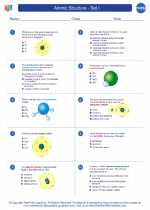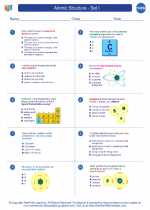Newton's Laws of Motion
First Law: Law of Inertia
Newton's first law of motion states that an object will remain at rest or in uniform motion in a straight line unless acted upon by an external force. In other words, an object will not change its state of motion unless a force is applied to it.
Study Guide Tips:
- Understand the concept of inertia and its relation to the first law of motion.
- Practice identifying situations where the first law of motion applies.
- Learn about the implications of this law in everyday life and in various fields such as engineering, sports, and transportation.
Second Law: Law of Acceleration
Newton's second law of motion states that the acceleration of an object is directly proportional to the net force acting on it and inversely proportional to its mass. This is expressed by the equation F = ma, where F represents the net force applied to the object, m is the mass of the object, and a is the acceleration produced.
Study Guide Tips:
- Understand the concept of force, mass, and acceleration and how they are related according to the second law of motion.
- Practice solving problems involving the calculation of force, mass, or acceleration using the second law equation.
- Explore real-life examples and applications of the second law of motion, such as understanding the dynamics of car crashes or the behavior of projectiles.
Third Law: Law of Action and Reaction
Newton's third law of motion states that for every action, there is an equal and opposite reaction. When one object exerts a force on a second object, the second object exerts a force of equal magnitude in the opposite direction on the first object.
Study Guide Tips:
- Grasp the concept of action-reaction pairs and how they manifest in different scenarios.
- Practice identifying and analyzing action-reaction pairs in various physical interactions, such as collisions, propulsion systems, and contact forces.
- Explore the implications of the third law in fields like rocketry, sports, and biomechanics.
Additional Study Tips:
- Utilize diagrams and visual aids to illustrate the application of each law of motion.
- Work through practice problems and scenarios to reinforce your understanding of Newton's laws.
- Discuss and debate the practical significance of Newton's laws in different scientific and engineering contexts.
- Explore historical and modern experiments that have contributed to the development and validation of Newton's laws of motion.
◂Chemistry Worksheets and Study Guides High School. Atomic Structure - Set I

 Worksheet/Answer key
Worksheet/Answer key
 Worksheet/Answer key
Worksheet/Answer key
